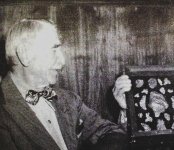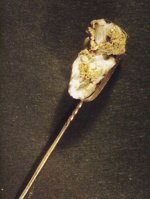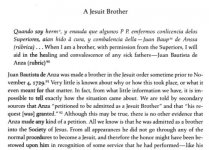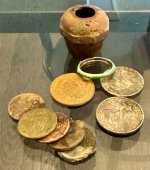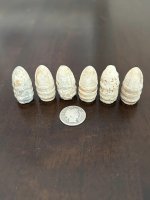Cubfan64
Silver Member
- Feb 13, 2006
- 2,986
- 2,789
- Detector(s) used
- Fisher CZ21, Teknetics T2 & Minelab Sovereign GT
- Primary Interest:
- All Treasure Hunting
Not to speak for Marius here, but perhaps the back story of the assay might help clarify the idea of just how 'representative' it might be. The assay was done because the buyer was uncertain of the value, in other words 'demanded' before buying it. That would mean that the sample was more likely chosen by the buyer, not the seller, and would not be the richest piece(s) of the lot. If the ore assay was done by a prospector looking to sell a prospective mine, then naturally it would have been the richest he could get, but in this case it was at the demand of the buyer.
That said, it obviously would have been hand cobbed to reduce the amount of waste rock to have to haul away. Even so, at 5500 ounces per ton, it is not as rich as some other mines have produced. We are speculating until someone finds the mine of Jacob Waltz.
Please do continue, sorry for the interruption.




Hi Roy,
Your explanation of the assay "back story" is how I've always understood it as well - thanks for clarifying. I probably wasn't exactly clear that what I was referring to wasn't the specific piece or pieces chosen to do the assay on, but rather the entire "collection" that was being offered for sale. It's my belief that what was being offered for sale was NOT representative of a vein of ore in a mine so trying to calculate a value for a vein of ore based on that assay is flawed is all.
I decided I'm not going to be able to make the Rendezvous this year. Combination of things including work, $ and just the fact that while I enjoy the opportunity to say hello to some folks I don't see very often, the get together just hasn't had the same feel for the last few years. Too much drinking for my taste, more people with completely crazy ideas and theories than usual and too many discussions about TV episodes, etc...
I'll go again at some point, but this just isn't the year for me unfortunately.
Last edited:


 Does anyone know if there was one? Take care, Jim
Does anyone know if there was one? Take care, Jim